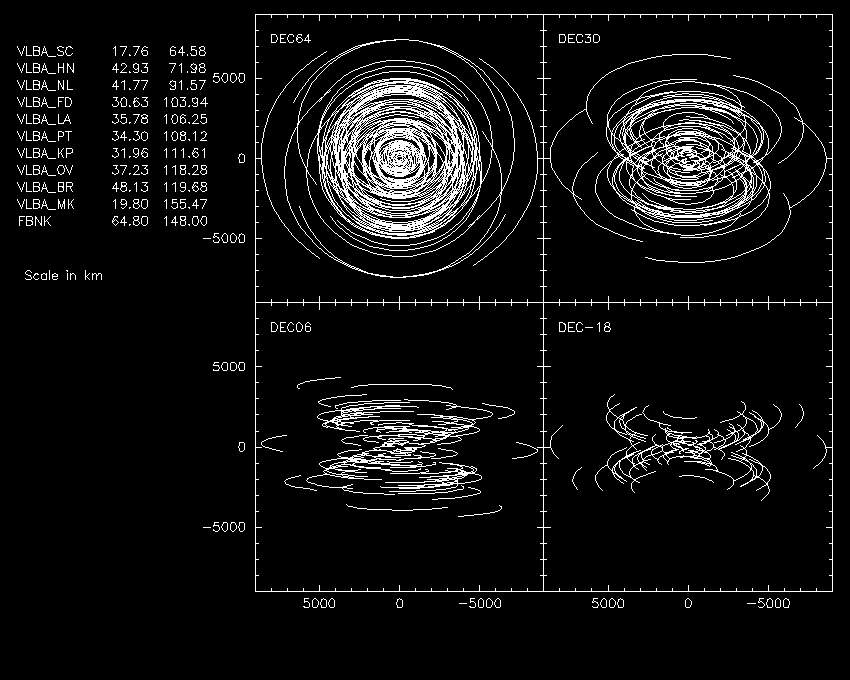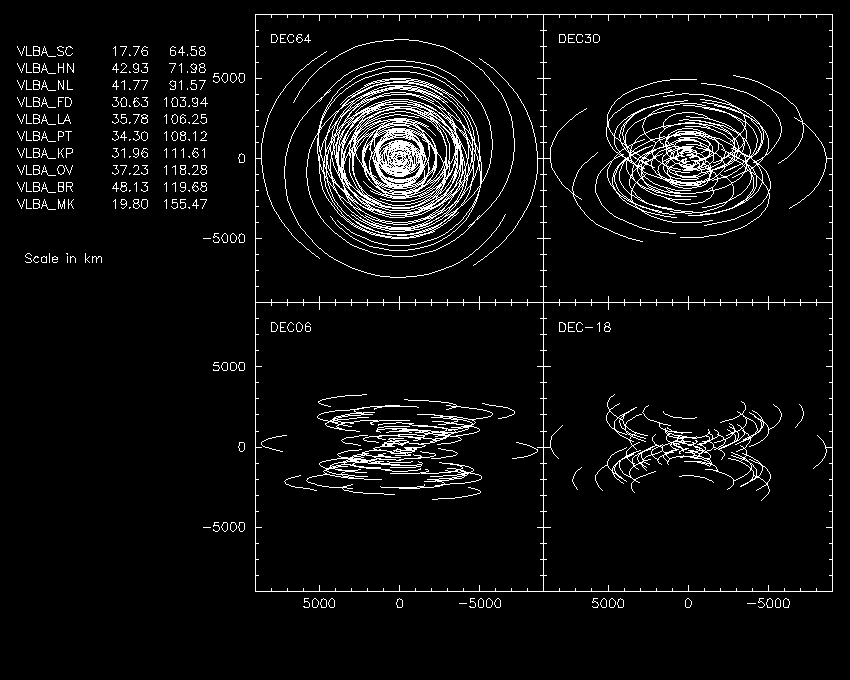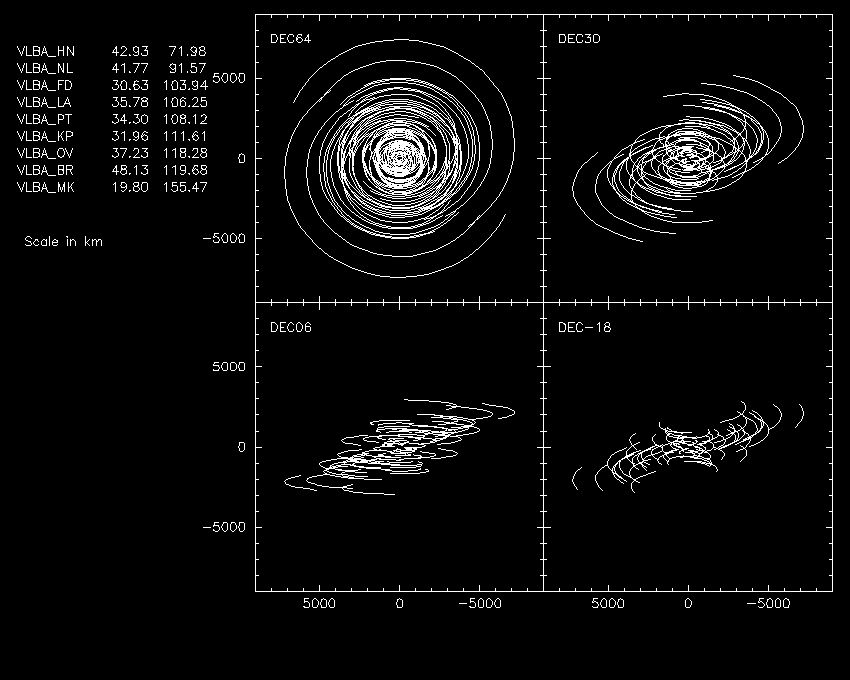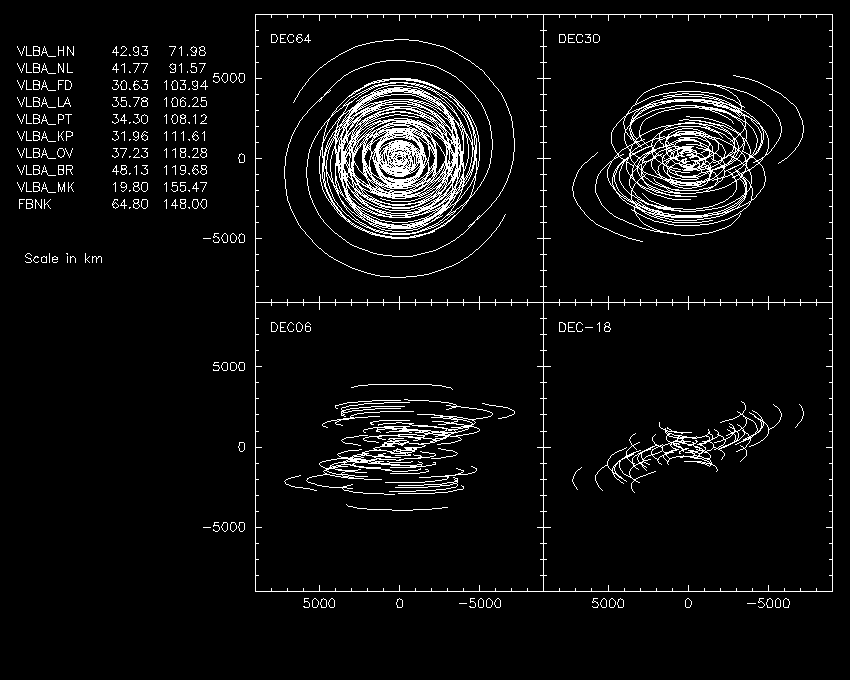
The Gill Creek antenna is operated by the NASA geodesy group based at Goddard Space Flight Center. It is located close to Fairbanks, Alaska. It is a very active VLBI antenna, probably spending a considerably greater fraction of total time doing VLBI than any astronomy antennas other than the VLBA. It has special operating concerns because temperatures during the winter can get very low (-60 deg F), but they have learned to deal with such extremes. The UV coverage came up related to a possible future upgrade or replacement.
This figure shows the coverage for the VLBA + Gill Creek (FBNK in the station list)

For comparison, here is the coverage of the VLBA. At high declinations, there is not much difference. This is not a big surprise because early VLBA designs used an antenna very near Gill Creek. But eventually it was decided that an antenna in the Carribean would do as well for high declination UV coverage, and could see sources much farther to the south. Thus the VLBA has an antenna on St. Croix (VLBA_SC). Note that at low declinations, Gill Creek does not help at all because it is too far north to see such sources. The price the VLBA paid for the southern coverage was much greater water vapor over the St. Croix antenna, making its use at high frequencies somewhat problematic.

An interesting question is whether a Gill Creek antenna, if it could work at high frequencies (43 or 86 GHz), could substitute for the St. Croix VLBA antenna. Below is the UV coverage of the VLBA without St. Croix. Note that the coverage degrades fairly gracefully. This was a design goal given the problems expected at high frequency.

Below is what Gill Creek would contribute to the VLBA without St. Croix. This is an interesting addition for positive declination sources. At low declination, as noted above, the sources cannot be seen from so far north.
